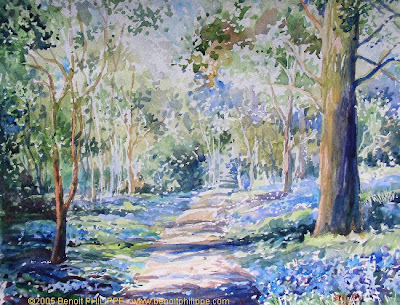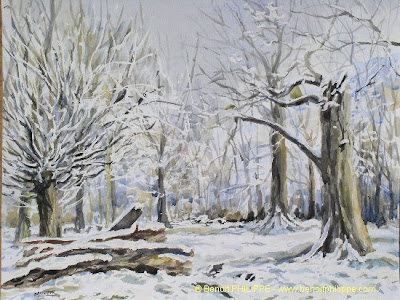Autumn is a good time to admire trees. Within a month, beeches went through dramatic changes: the green foliage turned yellow, then orange… Now, the brown leaves have started to fall, revealing the structure of the trees. Autumn is a magnificent season. Trees get on the warm side of the palette. Acers are in fire.
From a painter point of view, trees provide structure, verticals in the landscape, pointers to lead the eye of the viewer towards the horizon and reinforce the aerial perspective.
Five points to explore for artists:
- Learn about trees: go to your library and borrow books on trees. Naming is starting to understand.
- When drawing, get the overall shape of the tree first: Observe trees at dusk, when the dimmed light flattens the shapes and gives you a general outline. Another way to observe the shape of trees is to look at them in the light. Finally, guide books on trees often have a silhouette of each tree to help you identify a particular specimen.
- Paint and draw from nature: The same tree will grow differently if it is part of a group or an isolated specimen. Each tree has a particular rhythm, movement, personality. Rely on your observation skills.
- Paint and draw trees in all seasons: In winter, deciduous trees are bare and it is easy to see the shape of branches. In spring, the leaves bring colours, but the trunk and branches are still apparent. During summer, enjoy the full green foliage. In autumn, catch the riot of colours.
- Use negative shapes: rather than drawing intertwined branches, concentrate on the shape framed by these branches.
Trees around the year in 4 paintings

Spring

Summer

Autumn

Winter
Painting trees Drawing trees Painting subject negative shapes

All the tree paintings are excellent renderings. Each one a feast to the eyes.
ReplyDeleteI did not know there was so much in the trees.